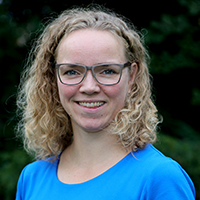Study and Research Paths at Upper Secondary Mathematics Education
PhD-defense by Britta Jessen
 The Department of Science Education announces the public defense of the PhD-dissertation "Study and Research Paths at Upper Secondary Mathematics Education" by Britta Jessen.
The Department of Science Education announces the public defense of the PhD-dissertation "Study and Research Paths at Upper Secondary Mathematics Education" by Britta Jessen.
The defense takes place in the Auditorium of Geological Museum (access through main entrance, go to first floor).
The defense is followed by a reception hosted by Department of Science Education. The reception takes place at the old Observatory, Øster Voldgade 3 (in the Botanical Garden).
Please contact secretary Christina Larsen if you have any questions regarding the defense.
Supervisor
Professor Carl Winsløw
Assessment committee
Marianne Achiam, Associate professor, Department of Science Education, University of Copenhagen (chair)
Yves Chevallard, Professor, Université d'Aix-Marseille, France
Marianna Bosch, Professor, University Ramon Llull, Barcelona, Spain.
Abstract
In didactics of mathematics, researchers have for decades been interested in how to teach students to pose questions and solve problems. Several approaches rely on the idea, that students learn mathematics, when they are engaged in activities similar to research mathematicians. This PhD project touch upon these ideas from the perspective offered by the Anthropological Theory of Didactics (ATD ). Within ATD, teaching is proposed to be designed as Study and Research Paths (SRP). This thesis investigates how SRP's support the students' learning of mathematics in a bidisciplinary context involving mathematics and biology and in everyday teaching. Through the case studies, it is explored what didactical tools are needed to realise the theoretical potentials of SRP based teaching.
Furthermore, it is explored what the teaching of mathematical modelling can gain from SRP as a design tool. Finally, the project explores the viability of SRP based teaching in an institutional context as upper secondary mathematics in Denmark. The case studies showed promising results with respect to engage students in autonomous questioning of the knowledge domains in the bidisciplinary design. However, a more precise analysis of the biological part of the design might have strengthened some students' outcomes. Sequences of SRA's seem to be a promising way of designing everyday teaching exploiting the potentials of SRP. In both case studies, certain media have been incorporated in the designs. In the SRA study, students were suggested media as guidance for the study and research process. Additionally, students were required to present their preliminary answers to their fellow students. These presentations served as media for fellow students) who engaged in autonomous questioning of mathematical details beyond the scope of teaching at this level. With respect to mathematical modelling, links and gaps were identified between scholarly knowledge and knowledge to be taught in secondary school. It is suggested that SRP based teaching can bridge parts of the identified gaps.
Finally, it is found that in order for SRP to be a viable alternative to prevailing mathematics teaching, the establishment of paradidactic infrastructures are needed to support teachers professional development. Furthermore, the restriction of high stakes written exams should be considered by ATD researchers. It is argued how the case studies directly relate to the exam formats for the teaching, which they were prepared for. But the largest amount of exam backwash stems from written exams. Therefore written exams should be designed to promote SRP based teaching, if possible.
The complete thesis can be found here:
Download PhD-thesis. (pdf)
